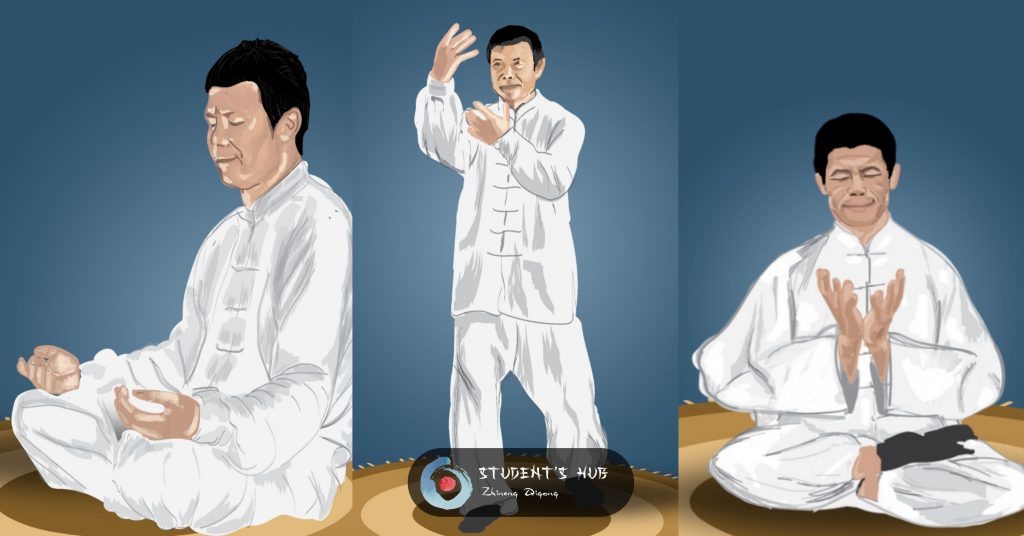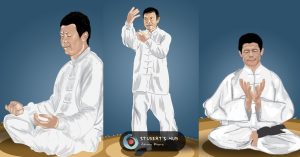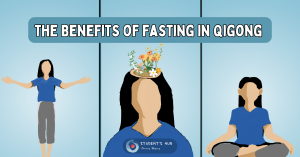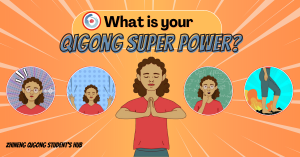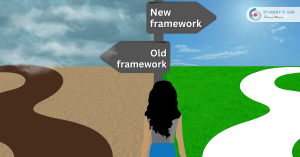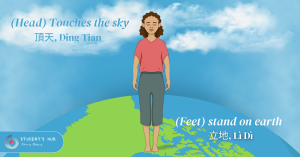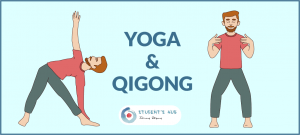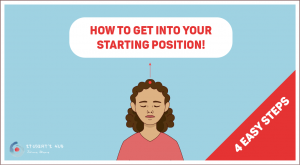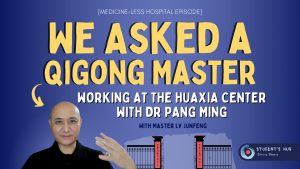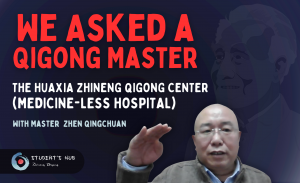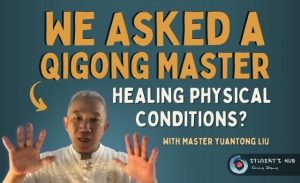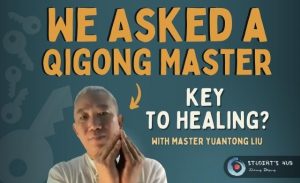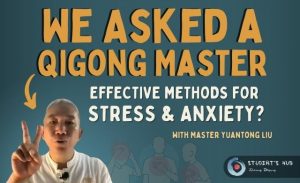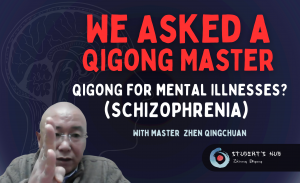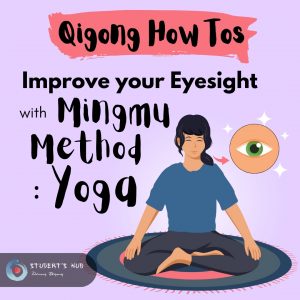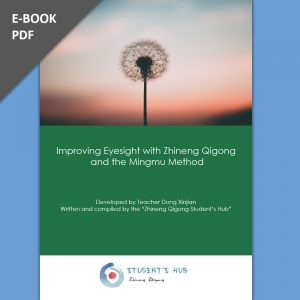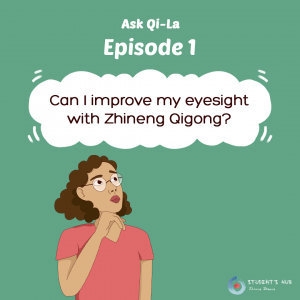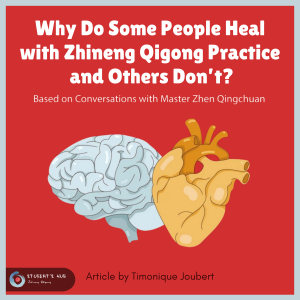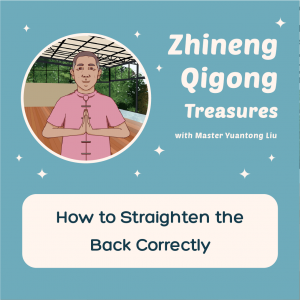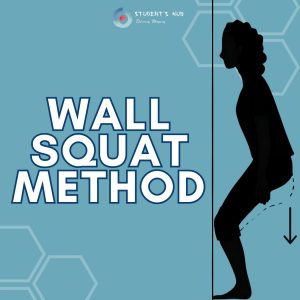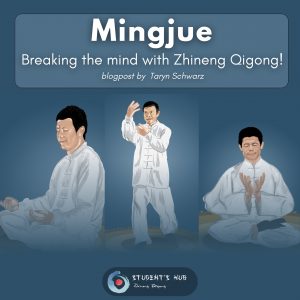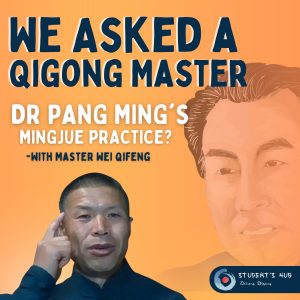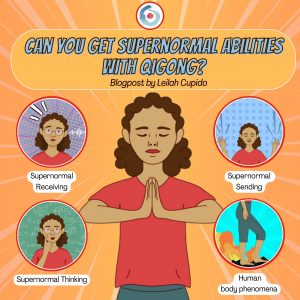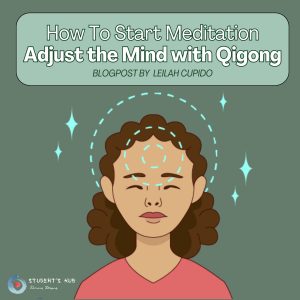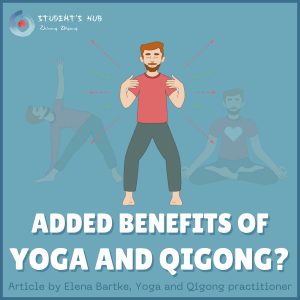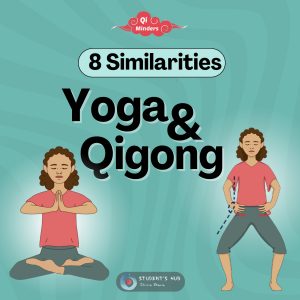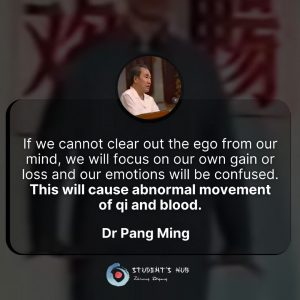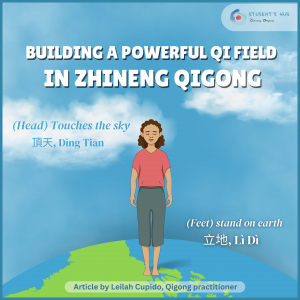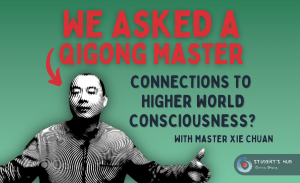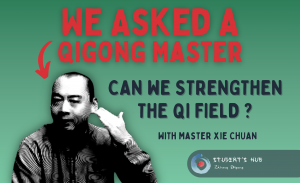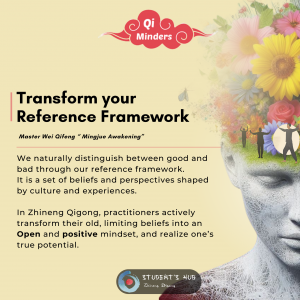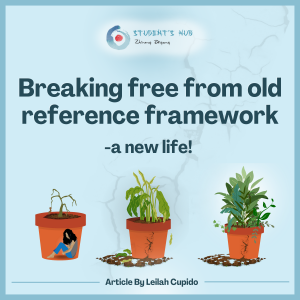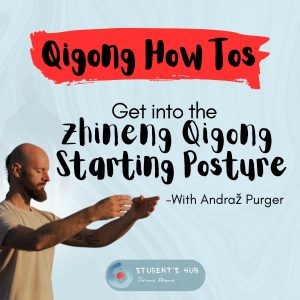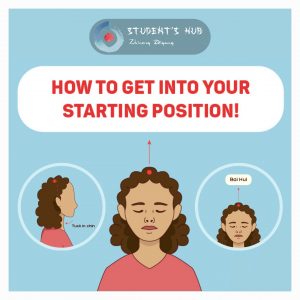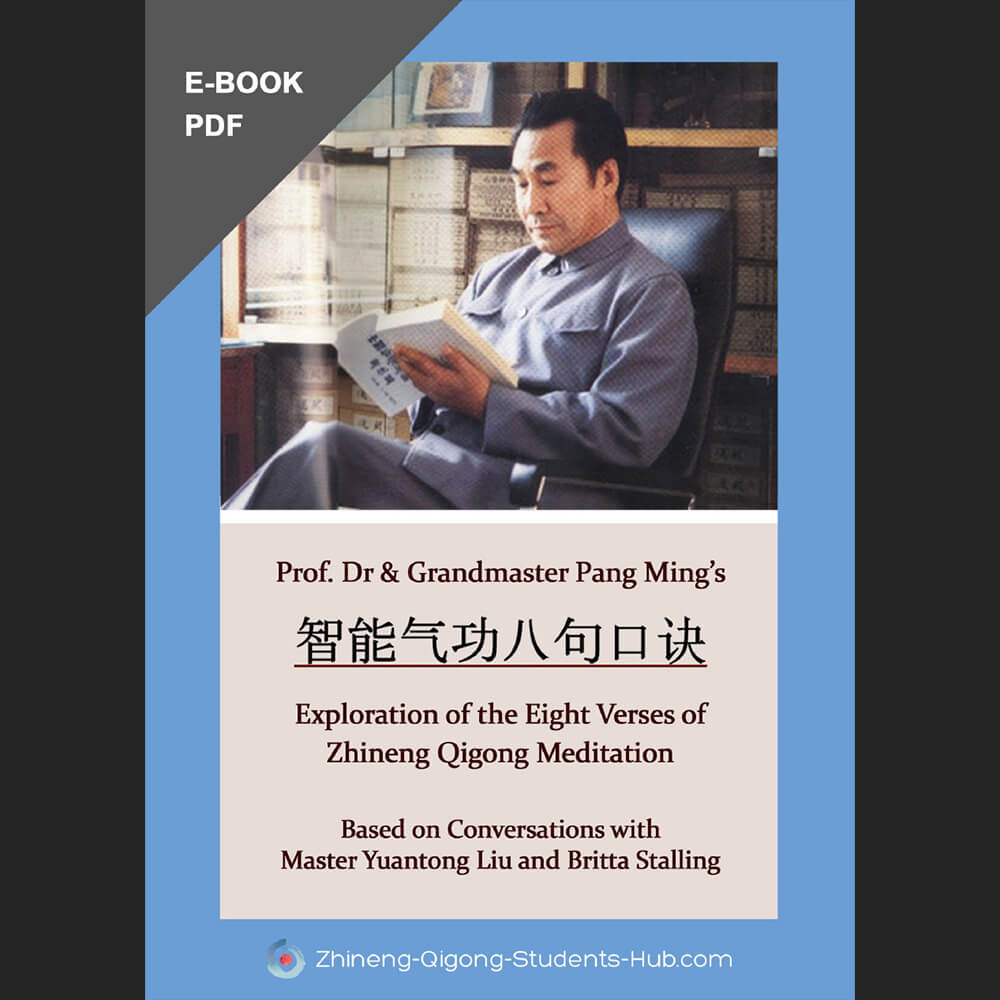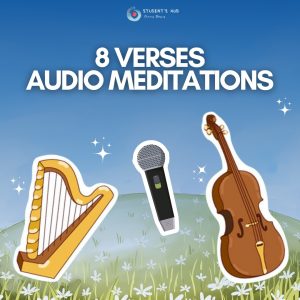Mingjue
Mingjue: Breaking the mind with Zhineng Qigong!
As a student of the Mingjue training, I learnt that managing our mind is a vital aspect to harness well-being. Teacher Wei Qifeng, founder of Daohearts and co-founder of the world consciousness community, formulated the Mingjue training program for this particular purpose.

What is Mingjue?
While ‘Ming’ means clarity and ‘jue’ means observation Teacher Wei describes it as a state of pure awareness. The observer comes to know and experience themselves through this act of awareness or observation. During this training, Teacher Wei guides his students through a series of seated and standing exercises, both static and moving. In addition, certain sounds can also cultivate this state of consciousness.



Mingjue is similar to mindfulness?
Working as a counselor with a background in psychology I find this to be evident. A pioneer of mindfulness in the West, professor Jon Kabat-Zinn, describes mindfulness as “paying attention on purpose in the present moment and non-judgmentally”. In fact he states that mindfulness is movement away from the thinking mind. This idea is also present in Zhineng Qigong.
While focusing on the present moment, one’s consciousness is observing one’s body and sensations. When thoughts and emotions arise, they are observed. As an example Teacher Wei uses the analogy of clouds passing by in the blue sky. The blue sky represents your pure consciousness and the clouds represent your thoughts. Rather than riding the waves of fluctuating thoughts and emotions, you let these thoughts float by. In this way, you become the observer.
Who are you?
This question arises while practicing mindfulness. We ask ourselves: “Are you the part of the mind that thinks, judges and analyses? Or are you more than that?” Similar to mindfulness theory, in mingjue training we learn that the thinking part of our mind is associated with our frame of reference.
How does Mingjue help to disentangle ourselves?
One’s reference framework can be described as the collection of perceptions, beliefs and experiences that shape our view of ourselves and our life. It is referred to as our “ego” or our attachments – the psychological patterns we identify with. Eckhart Tolle (best-selling author of The Power of Now) emphasizes we are not this mind. He argues that if we identify with it, this stream of movement in our consciousness can create deep suffering. Rather, Tolle suggests that we disentangle our sense of “I” from all the mental labels we subject ourselves to. This means to know ourselves as pure beingness.
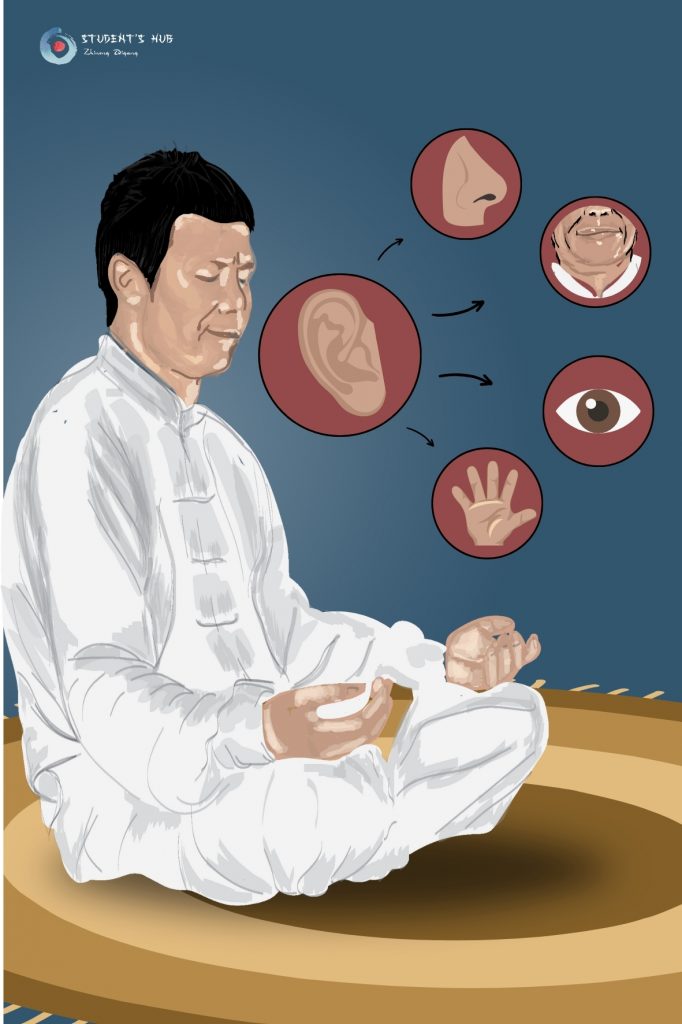
So, how do we disentangle ourselves?
During the mingjue training, we learn the skill of presence by practicing meditative exercises. Our consciousness “listens” and observes the body while we become aware of the subtleties of our senses.
When a thought arises, we observe it. When an emotion arises, we observe it. Over time, a clear distinction can be made between the part of the mind that thinks and the part that observes. Without this awareness, our thinking mind, or as Eckhart Tolle calls it, “the voice in the head”, rule our life. In Zhineng Qigong, we understand that consciousness is the master guiding qi, and ultimately guiding the body.
Psychologically speaking…
From a psychological perspective, if we want to free ourselves from limitation, we need to become aware of the information in our consciousness. Without this awareness, we become stuck in our default programming. Let’s express it another way: to create a healthy body and a healthy mind, we first need to know what our behavioral, thought and emotional patterns are. Secondly, we need to know that we are not these patterns, instead we are the consciousness observing it. As our practice develops, we learn to slowly detach from that voice in our head.

We develop a stable, calm state of mind, no longer pulled this way and that by the tides of our mind. The monkey mind is kept in check as we prioritize presence. Keeping a journal while practicing mingjue is useful because it helps us keep track of the movements in our mind.
In the Mingjue Awakening book this practice is described as holding a mirror up to yourself so that you can see yourself more clearly. The mirror itself is interpreted as your pure consciousness, while the smudges on the mirror represent your thoughts.
Humans and the universe are one
The Mingjue training course differs from other awareness trainings. The methods incorporated are based on Hunyuan entirety theory in Zhineng Qigong. The idea of oneness is central to the mingjue teachings. These teachings suggest that we are not separate from nature, but rather that we are one with it. This is summarized by the Zhineng Qigong phrase, “tian ren he yi”, meaning humans and the universe are one. It is only our reference framework that prevents us from experiencing this wholeness.
As Kabat-Zinn eloquently said, “Who you actually are is in fact far bigger than the narrative you construct about who you are”. Similarly in Zhineng Qigong theory, this idea of oneness is practiced by merging our consciousness with our body – this is called our internal hunyuan qi. This entirety of body, qi and consciousness then merges with the entirety of the universe – this is called external hunyuan qi.
Mingjue facilitates merging
Within the mingjue meditation, Teacher Wei guides us to place our attention on various body parts or centres. In each part we merge our consciousness with the inner space of that part. As explained in ‘Mingjue Awakening’, “Mingjue meditation and deep internal observation provide a path for consciousness to integrate with the body,”.
This reminds me of practices that reestablish healthy communication pathways between the mind and the body – craniosacral therapy being just one of them. Ged Sumner, Craniosacral therapist and qigong teacher explains this as an “integrated body awareness – a state of relating to your whole body in the present”.
As the mingjue meditation progresses, Teacher Wei guides us into a state of “emptiness”. It is in this “emptiness” where we begin to experience ourselves more as qi, and less as matter.
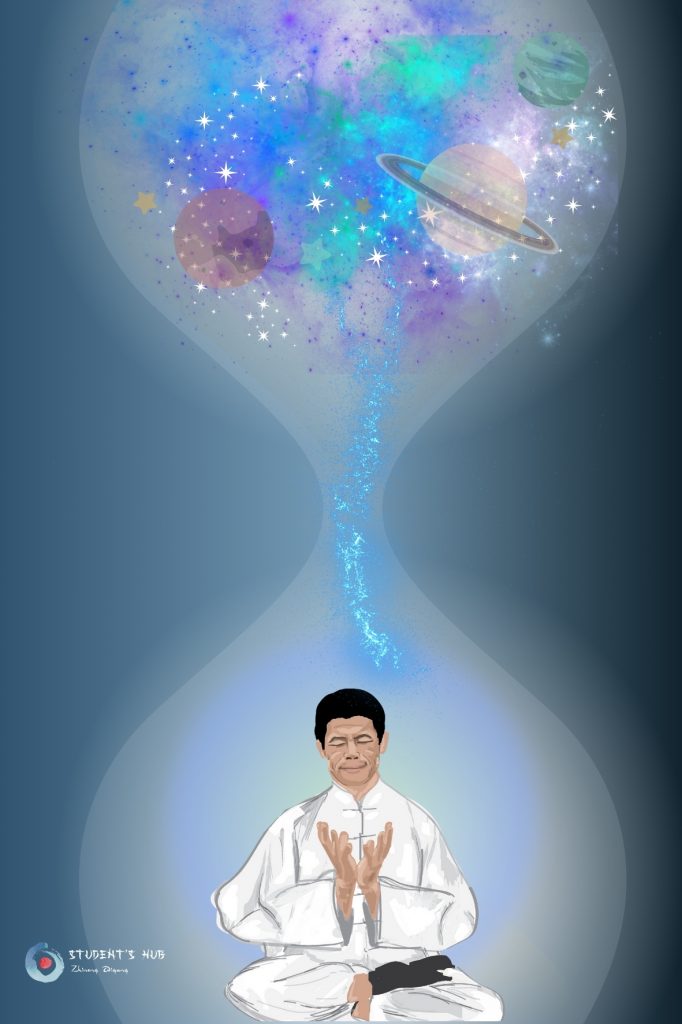
As boundaries between inside and outside begin to fall away, we experience a gentle blending of human and universal qi. In doing so, we transform ourselves and this is called hunhua in Zhineng Qigong. Hun means “to unite” and hua means “transform”.
The Intention of mingjue
The intention in the mingjue training is to experience an expanded state of consciousness – then allow this expanded state to transform us. The old reference framework (based on separation) begins to dismantle. A new frame of reference, based on unity with the universe, takes shape in our consciousness. Our thoughts, emotions, behaviors and, literally the very chemistry of our bodies, begins to change. We begin to mirror this new state of consciousness.
Teacher Wei Qifeng explains that when we practice mingjue frequently, this state of wholeness can facilitate healing within our bodies. When we detach from the old narrative in our mind, our body gets a chance to find its healing pathway again. Teacher Wei calls this, “healing without healing”, which means that when you experience a sense of wholeness, healing is a natural byproduct of this state
How can we apply mingjue in our lives?
The applications of mingjue are infinite. It can literally bring about change in every facet of life. As discussed previously, mingjue can facilitate healing and harmony within our bodies, but it can also do this in our relationships…
Relationships
According to Teacher Wei, with mingjue consciousness our relationships naturally become more harmonious: we live in the present, observe ourselves and detach from the stream of thoughts and emotions. Rather than judging others, we understand that they too have their own reference framework. We become less likely to react. We practice acceptance, surrender and understanding of others more readily.
Zhineng qigong practices…
The mingjue state of consciousness is essential to our zhineng qigong exercises. Teacher Wei emphasizes that to gain the most benefit from zhineng qigong methods, we need to be in mingjue state – meaning that mind, qi and body are moving together in a unified whole. While leading us through a la qi practice, he exclaims, in his delightful Chinese accent, “No any other thoughts!” What he means is that whether we are practicing lift qi up pour qi down, 3 centre merge, la qi or any other method, our mind needs to be one with our practice. When we practice in this way, our intention and our qi become focused and powerful.
Choosing our thoughts…
By practicing mingjue, we manage our thoughts better. It can help us to pause and choose our thoughts as if they were items on a conveyor belt – choosing the ones that are in alignment with our intentions and dismissing the ones that are not. Zhineng qigong calls on us to practice focusing on healthy information rather than the negative narrative. Teacher Wei says “we mustn’t mind the problem.” He encourages us to consciously move our attention away from our ailments and to place our focus on what we choose to create. This is based on ancient spiritual and modern scientific observations, and in our case, zhineng qigong science, that wherever mind goes, energy follows.

How long does it take to experience the benefits of mingjue?
So, how long does it take to experience oneself as pure consciousness and derive all the benefits pertaining to this awakened state? Teacher Wei describes mingjue as a gongfu. Gongfu can be described as a skill that is developed over a period of time. It requires regular practice and discipline. He is very clear that we do not only practice mingjue in our seated or standing exercises, but that we take the observer with us into everyday life. The aim is to develop this level of awareness and integrate it into our daily life activities, relationships and work. Mingjue is not just a solitary practice to be used once a day, but rather a way of life.
The mingjue consciousness field
Lastly, let me end by briefly sharing the intention of Teacher Wei. Central to the World Consciousness Community’s ethos is building a collective consciousness field that will support all of its participants, and in fact, the world at large. As each individual’s consciousness joins together and merges with the rest of the community, we form a field of mingjue consciousness. In my own experience, I can assure you that this field is no fantasy, but rather a tangible experience. I recall being late for one of my online classes and about 20 minutes later I felt a wave of stillness penetrate my being. My mind became quiet, my energy calm and my body relaxed. I knew in that moment that Teacher Wei was setting the group mingjue entirety field. To my astonishment, I realized that my personal energy field was being affected by the group field. The only word I can use to describe this experience is “magical”.
The question arises, “what would change in our world if groups like this became regular practice?” If more and more people gathered together in the name of stillness, presence, unity and love. How would it change the consciousness of the inhabitants of our planet? I believe that the answer to this question is the reason the world consciousness community was formed.
Haola! And thank you Teacher Wei, Dr Pang Ming, Zhineng qigong and all practitioners of the Way.
For more information on the Mingjue training, go to the book, “Mingjue awakening”, and the world consciousness community at daohearts.
References
Kabat-Zinn, Jon, 2012, Mindfulness for Beginners, Canada: Sounds True
Tolle, Eckhart, 2011, The Power of Now, USA: New world library
Qifeng, Wei, 2023, Mingjue Awakening: teachings on pure consciousness, collective field qigong and energy healing.
Sumner, Ged, 2010, Body Intelligence, London, Singing dragon

